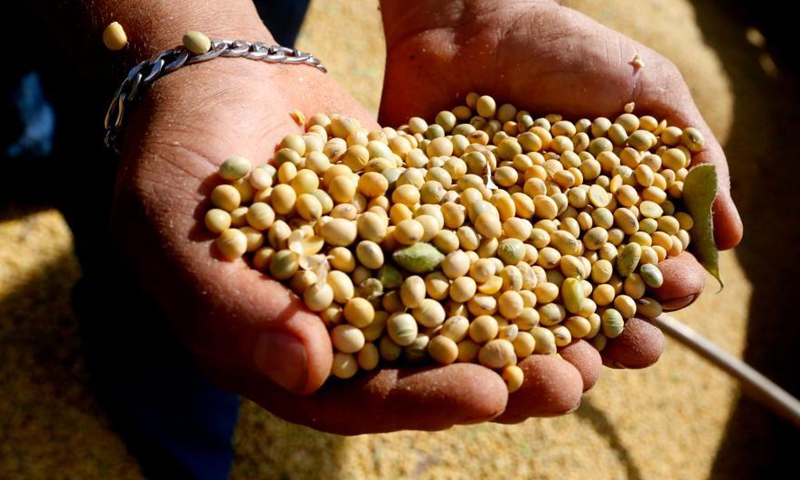
Photo:Xinhua
The shutdown of port facilities in the Gulf of Mexico due to recent storms, which have caused Chinese grain buyers to seek other routes such as Brazil, won't have a long-term impact on China-US trade and the implementation of the phase-one trade deal, analysts told the Global Times on Thursday.
Chinese importers bought four to six bulk cargoes of Brazilian soybeans early this week for shipment in October and November, Reuters reported Thursday, citing two traders with knowledge of the deals. The move was "an unusual purchase during the peak export period for rival supplier, the US."
The route transfer was because export terminals along the coast in Louisiana have struggled to recover from damage, flooding and power outages caused by Hurricane Ida on August 29. To make it worse, Tropical Storm Nicholas is slowly passing in the area.
"Tropical Storm Nicholas has the potential to bring flash flooding as we are still working to recover from Hurricane Ida. Please keep a close eye on the weather and exercise caution in the coming days," said the official Twitter account of Port of South Louisiana on Wednesday.
Wu Minghua, an independent shipping industry analyst from Shanghai, told the Global Times on Thursday that the weather had forced China, the world's largest grain buyer, to consider sourcing from other countries for a period, given the rising demand in the nation for livestock feed. But it won't disturb the implementation of the China-US phase-one trade deal to a large extent, Wu said.
However, the re-routing "might cause price hikes," Wu warned.
China's trade with the US surged by 40 percent year-on-year to $404.6 billion in the first seven months of 2021, according to statistics released by the Chinese customs. China's exports to the US surged by 36.9 percent in US dollar terms, while imports from the country rose by 50.4 percent. Currently, the US is China's third-largest trading partner.
China's grain imports from January to July stood at 91.7 million tons, a year-on-year increase of 37.2 percent. Of the total, soybeans accounted for 58 percent and corn for 18.3 percent. The US accounted for about a third of China's total soybean imports.
In an online forum hosted by the US Soybean Export Council in August, US experts were optimistic about the implementation of the phase one trade deal.
China's soybean demand in the 2021-22 marketing year (September-August) is unlikely to slacken despite a lingering negative crush margin since June, according to S&P Global Platts.
Crush margin is the profit derived from processing soybeans into soybean meal and oil.
"We can complete the phase-one deal, because these things are what China needs, especially agricultural products. The reason why the current progress is not enough is essentially the impact of the epidemic, which has caused shipping to be blocked," Gao Lingyun, a trade expert at the Chinese Academy of Social Sciences in Beijing, told the Global Times.
Situated on the Mississippi River in the southeastern US state of Louisiana, the Port of South Louisiana is a premier sea gateway for both exports and imports.
Equipped with seven grain elevators, the port is the largest grain exporter in the US, accounting for more than 50 percent of the nation's total grain exports. China is the port's top trading partner in terms of exports ahead of Mexico, Japan, Colombia and Egypt. In imports, China ranks fifth, statistics from the port revealed.
In 2018, the port handled about 10.88 million metric tons of exports to China dominated by grain, chemicals and fertilizers. Meanwhile, it transported 1.2 million metric tons of Chinese imports.
